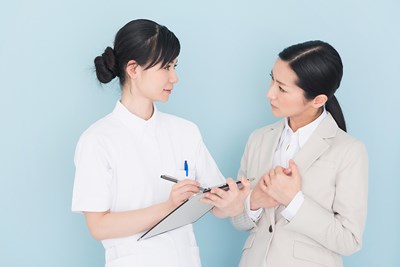Ovarian cysts are fluid-filled sacs that grow within or on the surface of a woman’s ovary. Most of the time, ovarian cysts are harmless and cause no symptoms—they disappear, without treatment, within a few months. If a cyst does cause a problem, however, it can be surgically removed. Here are 10 terms you should know when talking about ovarian cysts with your doctor.
- Ovary: The two small, bean shaped organs that are part of the female reproductive system are ovaries. A female has one ovary on either side of her uterus. Cysts that develop on the ovaries may affect only one or both ovaries simultaneously.
- Ovulation: The ovaries release an egg about every 28 days as part of the menstrual cycle. They also releases the female sex hormones: estrogen and progesterone—these hormones are an important part of female reproduction. Ovarian cysts can occur due to a hormone imbalance.
- Functional ovarian cyst: A functional ovarian cyst forms because of a change in the way the ovary develops or releases an egg. The two types of functional ovarian cysts include follicular cysts, which are the most common type, and luteal ovarian cysts.
- Ovarian follicle: An ovarian follicle is located in the ovaries. Stages of the menstrual cycle are influenced by the hormones that the ovarian follicle secretes. At the beginning of puberty women have about 400,000 follicles, each one has the potential to release an egg during ovulation for fertilization. The eggs are developed once per menstrual cycle.
- Corpus luteum cyst: Irregular changes in the follicle of the ovary following the release of an egg can cause the egg’s escape opening to close. Fluid collects inside the follicle, and a corpus luteum cyst develops. It can rupture during menstruation and take a few months to disappear.
- Polycystic ovary syndrome (PCOS): Small cysts develop on your ovaries as a result of PCOS. Although this produces several cysts, they’re considered harmless. They’re small egg follicles that don’t grow and develop due to a change in hormone levels.
- Endometriosis: Ovarian cysts can be caused by medical conditions, such as endometriosis. This condition occurs when pieces of the tissue that line the womb— endometrium—are discovered outside the womb in the fallopian tubes, ovaries, bladder, bowel, vagina, or rectum.
- Rupture: An ovarian cyst rupture is common. A ruptured cyst may cause no symptoms, mild symptoms, or sudden and severe pain that requires emergency attention. If pain is present, it’ll be felt in the lower abdomen. Pain will increase if the cyst is infected; there may also be bleeding.
- Torsion: If the cyst grows on the stem of an ovary it can become twisted, blocking the blood supply to the cyst and causing severe pain in the lower abdomen
- Hysterectomy: A hysterectomy is a surgical procedure that involves removing a woman’s uterus (womb)—the fallopian tubes and ovaries may also be removed. If a cyst is identified as cancerous, a hysterectomy will be performed.



